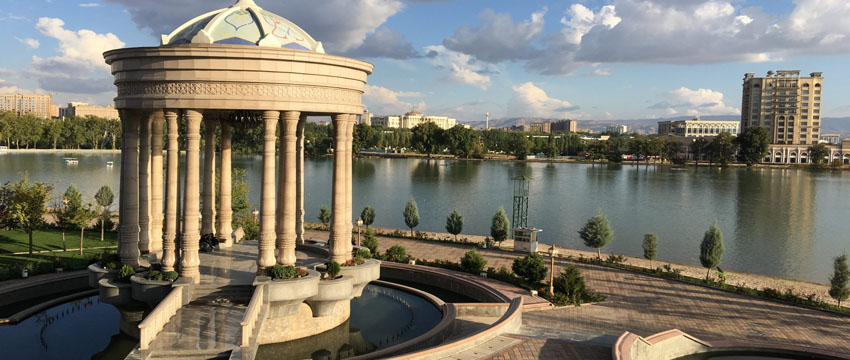The region of Tajikistan from the most antiquated occasions lay on the imperative historical routes of the Silk Road associating the East and the West. It was essential in International exchange and social trade connecting Bactria, Tokharistan, Soghd, Istaravshan and Fergana with India, Afghanistan, and China.

The Silk Road encouraged not exclusively to trade products between the East and the West yet additionally ideas, cultures, and people. Exceptionally well known along the whole Silk Road were the weapons made by Soghd skilled workers. Exceptionally famous were calfskin items and adornments, silk textures, and hued salts. Soghd exported astonishing “golden peaches”, white and yellow fruits, sheep and elegant quick-footed racers.
As indicated by old sources there were the following areas of the Silk Road which crossed Tajikistan.
Soghd course went from Samarkand to Kokand through Pendzhikent and further out and about prompting Fergana valley through Varz, Ura-Tyube, Khujand, Konibodom, and Isfara.
The other routes at times called “Karotegin” associated Termez and Kashgar (China) through Hissar and Dushanbe.
Khatlon route branched from Karogetin to the south and led from Dushanbe to Balkh (Afghanistan) up to the southern Silk Road line.
Khatlon route expanded from Karogetin toward the south and drove from Dushanbe to Balkh (Afghanistan) up toward the southern Silk Road line.
The route called “Pamir” drove from Balkh (Afghanistan) to Khorog and was additionally part into different routes. Regardless of the unpredictability of the high-mountain alleviation, the terrains of current Tajikistan in times long past and the Middle Ages filled in as the scaffold amongst people groups and civic establishments.
Tadjik urban areas on the Silk Road are valuable pearls surrounded by pleasant scenes. Among them are Pendzhikent, Ura-Tyube, and Khujand. Increasingly from 20 centuries prior those urban areas were celebrated for their artworks, culture and well-developed trade. The antiquated streets were gone by various processions, which halted in caravanserais and traded the brought merchandise in Oriental markets. In this association, it is conceivable to discover the components of the most unique legends, ceremonies, and religions in the way of life and crafts of Tajikistan.
Antiquated Settlement Of Penjikent
Penjikent, the most seasoned city of Tajikistan is situated in the beautiful valley of the Zeravshan River. The excellence and ripeness of those terrains were the explanation behind the presence of little settlements and later – the city which thrived in the fifth-eighth centuries. The wonderfully sustained enlightened city was a standout amongst the most essential cultural and crafts centre of Soghd. The royal residence of the Senator encircled which temples, markets, rich houses of townspeople enhanced with various trimmings and wooden and dirt models of old divine beings, was the city’s gem.
Ura-Tyube (now Istravshan)
The gem of Tajikistan, old Ura-Tyube, once was a noteworthy exchange focus on the junction of antiquated caravan routes, the city of Oriental markets, weavers and handicraftsmen.
Situated in the north of Tajikistan, in lower regions of the Turkestan Ridge, the city celebrated its 2,500th birthday celebration. It was established in the sixth century B.C. by Cyrus, the Achaemenid ruler. It was the time when it was named Cyropolis or Kurushkada. By at that point, when Alexander the Great had vanquished Central Asia (the fourth century BC), Kurushkada was at that point a major, well-fortified city.
Khujand
This city situated in the beautiful valley of the Syr-Darya is more than 2,500 years of age. It was first described in Aristotle’s works. Amid its 2,500-year history, the city was more than once resuscitated after various unfortunate victories.
From antiquated occasions remaining on the junction of famous trade routes between the East and the West made Khujand one of the major cultural and economic focuses of Central Asia, the real fixate on the Silk Road.
